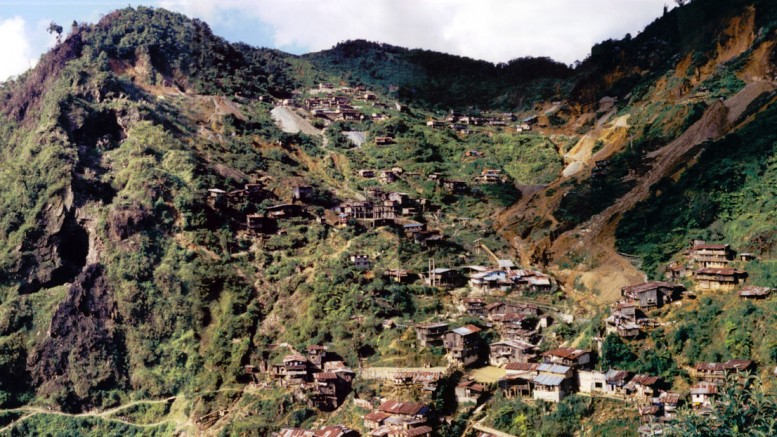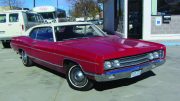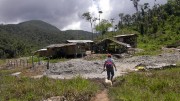The following is an edited version of the first chapter from an upcoming memoir entitled “The Last Great Adventure,” for which any profits will go to the Baca Ortiz Hospital for Children in Quito, Ecuador.
Geologist Keith Barron is co-discoverer of the exceptionally rich Fruta del Norte high-grade gold deposit in southeastern Ecuador — a feat for which he was co-winner of our “Mining Persons of the Year” award in 2008. He is currently president of Aurania Resources (TSXV: ARU). For the unabridged version of this story plus much more, please visit his personal blog at www.straighttalkonmining.com.
In 1998 I was in Caracas, Venezuela, as a partner in a gold and diamond venture with a group of South African investors. I had lived in Venezuela from December 1993 through to the middle of 1995 and it was familiar territory to me.
In the run-up to the December 1998 presidential elections, my lawyer was dismayed by the polls that indicated Hugo Chavez would probably win. If so, he forecasted a coup d’état with bloody street battles, and was advising all his foreign clients to leave the country for a month or so until after the elections.
But where to go? After a fun interlude climbing Mount Roraima — a high mesa shared with Brazil, Venezuela and Guyana that was the model for Sir Arthur Conan Doyle’s “The Lost World” — I was stymied as to where to go next.
A friend had just been in Quito, Ecuador, at a Spanish language school, and highly recommended it. Plus he said Quito was going through hyperinflation and was very cheap.
So I boarded a flight to Quito, where I was met by a packed minibus with a virtual United Nations of newly arrived students. At an orientation meeting at the language school I was told that we would each be placed with an Ecuadorian family as lodgers during our stay, with our hosts given strict instructions to only respond to questions in Spanish.
That evening I was introduced to Dr. Octavio Latorre Tapia, his wife Charito (Rosita), and their sons Jose-Luis and Carlos. Thus began a friendship that has lasted almost 18 years.
Octavio had done his PhD at Boston College and at the time, was a history professor at the International University in Quito. Octavio can converse eruditely on almost any topic, and we agreed to bend the rules “just a little” as he said he was losing his English.
Of course, we eventually got on the topics of geology and mineral exploration. Octavio maintained that Ecuador was the best country in the world for gold exploration, and that he had lots of documents to back up his claim.
Then he told me a fantastic story.
In 1981, two lads had been hunting wild pigs when they came across old tunnels in a hillside, deep in the forest.
Scattered around were egg-shaped pieces of granite called “quimbaletes” — single pieces of shaped stone with a hole drilled through them on which rests a wooden board. The rocks are rounded on the bottom and act as primitive ore crushers. One person throws ore samples under the egg and a second balanced on top of the egg rocks rhythmically back and forth. I had seen these in Peru where small armies of women were rocking to the music playing in their Sony Walkmans. The Walkmans were new at the time, but the technique dated back well before the Inca. Being indestructible, the quimbaletes were historical evidence of past mining activity wherever found.
The two lads had stumbled across the lost gold settlement of Nambija, and it was rich!
Within one month there were 25,000 artisanal miners on the site, consolidated into 75 shaft-sinking operations. By 2000, the site had yielded 2.7 million oz. gold.
But this was only a fraction of what was produced, since the chaotic, unregulated settlement yielded perhaps three times this much, which vanished into the “mercado negro.”
Nambija had been mined by the Colonial Spanish, and probably originally by the Inca. It had been abandoned in 1603 after a smallpox epidemic killed off the native labour. One historical writer described Nambija as a “poor mine,” no doubt because it was an underground proposition rather than a surface one, which the Spanish preferred.
I had heard about Nambija. In December 1997 Terry Bottrill, my former boss at Battle Mountain Gold, had asked me if I was willing to replace him on a gold project, as he was busy with other things and couldn’t finish his contract.
I went for the interview and was told to be ready to go to Ecuador just after the new year. At a Christmas party I ran into another ex-employee of Battle Mountain, who said to me, “Did you hear about Terry? He was chased off a property by miners with AK-47s! Some place called Nambija.”
Later I heard stories about company helicopters trying to land while illegal miners hurled dynamite sticks at them. (At the time I was mad as hell, but Terry, I’ve forgiven you.)
In 1981 there was no national mining law in Ecuador, and the Nambija area had thousands of peasant squatters.
Later, Placer Dome and Newmont Mining would be given mineral rights by the government. But the artisanal miners were hostile, and, supplied with guns from Colombia, they resisted all attempts at removal.
Octavio told me that the Ecuadorian government was well aware that Nambija had been mined by the Colonial Spanish, and there had been accurate maps showing the precise location of Nambija for more than 200 years.
In a disused bedroom against the wall, he dug out a large glass-framed print by Pedro Vincente Maldonado from 1750 (downloadable from the U.S. Library of Congress website at www.loc.gov).
The government surmised that had Nambija come to the attention of its geological survey (then part of the military) before its rediscovery, it could have been exploited in a logical, methodical and tax-generating fashion, instead of what became a chaotic, haphazard, dangerous and environmentally unsound manner.
After Nambija’s rediscovery in 1981, Octavio was tasked by the Ecuadorian government with a curious research exercise: together with a small number of other historians, to comb the country’s archives for all mentions of historical mines. The project was begun but, being historians instead of hard-nosed mining people, the work dragged on, and it was eventually no longer supported.
The results were hastily thrown into a paperback book entitled Investigación Histórica de la Minería en el Ecuador, published by the Direccion de Industrias del Ejercito — a part of the armed forces. It provided no maps, no key and no contextual text, simply excerpts from the documents. Indeed, the texts are all but impenetrable to the neophyte.
Octavio told me that there were hundreds if not thousands of documents in the archives, many of which concerned the King’s Fifth — the production royalty payable to the Spanish Crown. Mines were scrupulously documented by the Spanish Court. There had been seven great gold-mining districts in the Audiencia de Quito (now Ecuador) in the larger Viceroyalty of Peru (now Ecuador, Peru and Colombia).
Ecuador was clearly a great place for exploration.
In 2000, my labours in South Africa exploring for diamonds came to an abrupt end and I returned to Ecuador, and visited the Galapagos Islands.
With my friend Peter Werner and his family, we rented a cabin cruiser for a week and toured several islands with a park guide. Octavio — who was an expert in the islands’ history — asked if he could come along, and of course we acquiesced.
Pete and I are scuba divers and we saw some incredible sights, especially huge schools of sharks, before the marine park was invaded by illegal fishermen who murder the sharks for their fins, which they sell to China.
On that trip Octavio convinced me to finally take the plunge and explore Ecuador. Over the next two months I went to the U.S. Geological Survey library in Reston, Va., and to the Geological Survey of Canada library in Ottawa. I parked myself in front of every book and report on Ecuador I could find.
I resolved to travel to Ecuador just after New Year’s 2001 and tour the three gold provinces of El Oro, Zamora-Chinchipe and Loja, just to see what turned up.
In Toronto I picked up Patrick Anderson — who was unemployed like myself — as a confederate. Patrick and I had worked together in Venezuela and Brazil, and his Spanish was much better than mine.
We were gone for a month and really didn’t follow any itinerary. There were many dead ends and wild goose chases, and we saw a lot of geology.
In the mining area of Chinapintza in the far southeastern corner of Ecuador, near the Peruvian border, we saw a mostly abandoned property that had been explored by the Canadian company TVX Gold. There was massive evidence of misspending: an exploration adit that was much larger than it needed to be, and miles of unsplit and unsampled drill core in the sheds. The gold was coming from a distinctive porphyry with prominent bipyramidal quartz crystals.
The next day we went with Daniel Philco, the regional director of mining, to an abandoned prospect near the military border base of Paquisha Alto. This area had yielded 750 grams of gold from a one-man surface washing operation, but our host couldn’t understand why gold was coming out of “grey clay” and “on a hillside,” where there was no river.
While standing on the outcrop I realized this was a clay-altered quartz porphyry and identical to what we had seen the previous day at Chinapintza, 10 km south. It looked really juicy for gold.
I decided then and there to file a concession for the area — the first of a package that would become a 930 sq. km ground parcel. The “Emperador” concession was granted on April 17, 2001, and I remember the date because the gold price was almost rock bottom, at US$252 an ounce.
When I got back to Canada and told everyone that I was going to build a new company, working in Ecuador, they all said I was nuts. Ecuador had a record of yielding nothing but small mines that were only good for artisanal miners.
I stuck to my guns and told everyone that geology was no respecter of political boundaries, and there was no reason why Ecuador couldn’t be just as prolific for gold as Peru just across the border.
Next: Part 2 — Playing high stakes poker for Fruta del Norte

The author Keith Barron looking at Fruta del Norte core in Ecuador in 2007. Credit: Keith Barron.




Be the first to comment on "Odds ‘n’ Sods: The rediscovery of Nambija and the road to FDN in Ecuador"